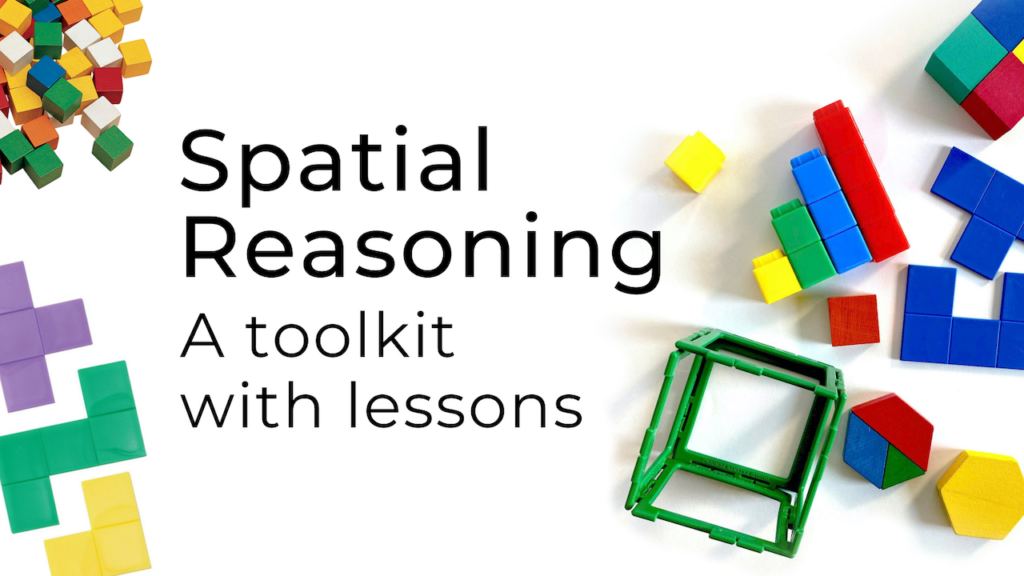Skyscapers
Primary/Junior/Intermediate (Age 3 – 8)
Curriculum Goal
Primary: Geometry and Spatial Sense
- Compose and decompose various structures, and identify the two-dimensional shapes and three-dimensional objects that these structures contain
Junior: Geometry and Spatial Sense
- Construct three-dimensional objects when given their top, front, and side views
Intermediate: Geometry and Spatial Sense
- Make objects and models using appropriate scales, given their top, front, and side views or their perspective views
Context
- Students work collaboratively to challenge and enhance their spatial reasoning and visual thinking skills to accurately place skyscrapers (coloured multi-link cubes) in all cells on the grid.
Materials
- Warmup Activity Slide Deck (Appendix A)
- Physical Game Board (Appendix B)
- Coloured multi-link cubes
- Virtual Game Board (Appendix C)
- Buildings that are…
- One unit tall are yellow
- Three units tall are blue
- Two units tall are green
- Four units tall are pink/red
- Buildings that are…
Lesson
Introduction:
- Provide each student with 10 multi-link cubes.
- Project Appendix A. Keep the slides in edit mode to ensure that you can move the buildings when applicable.
- Initiate this activity with the following: Imagine you are in the middle of a city surrounded by skyscrapers. I want you to close your eyes and visualize a skyscraper that is four units tall right in front of you. Build that skyscraper with your multi-link cubes.
- There is another skyscraper directly behind the first one and it is three units tall. Build that skyscraper and place it behind the first tower that is four units tall. When you are looking straight on can you see the three unit tall building that is positioned behind the four unit tall building?
- Students should share that they cannot see the three unit tall building because the four unit tall building is blocking it.
- Continue, asking another warmup challenge: Build a tower that is four units tall. This will be the farthest building from you. There is a building positioned directly in front of the four unit tall building and is three units tall. Build the three unit tall skyscraper now. In front of the three unit tall tower, there is another tower that is two units tall. Build that tower and place it directly in front of the three unit tall building. Finally, there is a one unit tall building in front of the two unit tall building. Place one cube in front of the two unit tall building. How many different buildings do you see when you look at the buildings head on?
- Students should see four different buildings as the blocks cascade upward like a staircase in a one, two, three, four formation.
- Proceed by prompting students to mentally rotate their line of buildings 180 degrees so that the buildings are facing the opposite direction. Ask students: How many buildings can you see now?
- Students should share that they can only see the four unit tall skyscraper now as it is blocking the view of the other buildings.
Instructions:
- The objective of the game is to place skyscrapers in all cells on the grid according to the following rules:
- The size of the grid dictates how tall the towers can be. For example, a 4 x 4 grid indicates that the maximum height a tower can be is four units tall. For all grids the minimum height of a building is always one unit tall.
- You cannot have two skyscrapers with the same height on the same row or column.
- The numbers placed around the grid indicate how many towers should be seen when using the mind’s eye to look from that perspective.
- Stack the accurate number of multi-link cubes in each cell to indicate the height of the skyscraper.
- Reiterate to students that a taller skyscraper will block the view of short ones.
Look Fors
- Do students understand how to read and interpret the grid?
- What language is being used when students describe the positions of the buildings?
- What problem solving strategies are learners using to tackle the challenge?
Share this lesson
Share on facebook
Share on twitter
Share on email

